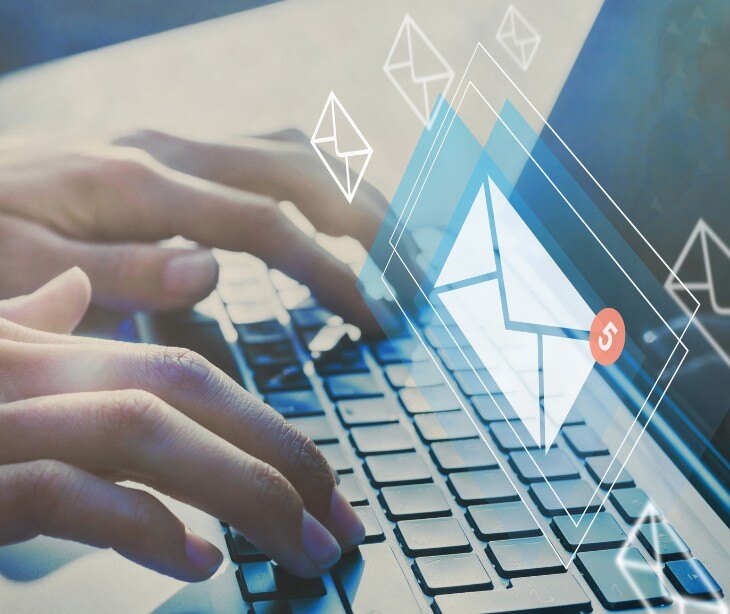3 min read
How GPs and specialists can use HIPAA compliant email
Kirsten Peremore
September 17, 2024

Patient referrals serve as a bridge between general practitioners (GPs) and specialists. When a GP encounters a medical issue beyond their expertise, they initiate a referral to a specialist with the necessary depth of knowledge in a particular area, such as cardiology or neurology. By using HIPAA compliant email, all referrals can be private and secure.
Why email is the best tool for patient referrals and sharing PHI
According to a BMC Health Services Research study, “New models for the delivery of care have been proposed, emphasising better integration between primary and specialty care, coupled with systems for better patient self management.” The utility of email extends beyond initial consultations to support ongoing communication necessary for follow-up and coordinated care management.
As treatment progresses, general practitioners and specialists can use email to update each other on the patient's condition, adjust treatment plans, and share results from follow-up tests. The ongoing email-facilitated dialogue ensures that patient care remains a collaborative and dynamic process, responsive to the evolving medical needs of patients.
HIPAA compliant email platforms help communications adhere to the necessary standards to protect sensitive patient information against unauthorized access. Compliance with these regulations is a legal requirement as a trust-building measure, reassuring patients that their personal health information is handled with care.
See also: Why people still fall for phishing attacks in 2024
Emails for referrals to specialists
When a GP refers a patient to a specialist, email is used to quickly send all the necessary details, like the patient's health history, current symptoms, and test results. It also helps in setting up appointments easily, allowing all parties to coordinate times that work best without back-and-forth phone calls. After the initial visit, GPs and specialists can keep each other updated through email, discussing the patient’s progress and any changes in treatment. Ongoing communication helps everyone involved stay on the same page.
The common uses include:
- Sending referral letters and patient information: Email allows this information to be shared quickly and securely.
- Transmitting diagnostic results and medical reports: Specialists receive accurate and timely data necessary to make informed diagnostic and treatment decisions.
- Scheduling appointments: Streamlines the process of finding mutually available times, reducing the administrative burden and improving patient satisfaction by speeding up the process of getting needed care.
- Follow up communication: Maintains a continuous loop of communication between the GP and specialist.
- Coordinating care among multiple healthcare providers: Ensures that all team members are informed and can collaborate effectively.
- Securely sharing imaging and large files: Overcomes the limitations of traditional mail or fax, allowing for immediate access to high-quality digital images and data files.
Best practices
When sharing referrals with specialists there are a few best practices that benefit specialists and protect patient information.
These include:
- Implement templates for referral letters that include all necessary patient information, such as personal details, medical history, current medications, reason for referral, and specific questions for the specialist.
- Always use secure, encrypted email services to protect patient confidentiality and comply with HIPAA regulations.
- Instead of overwhelming specialists with too much detail, provide a concise summary of the patient’s condition, including key findings and relevant test results.
- After sending a referral, follow up with the specialist’s office to confirm that they have received the email and all attached documents.
- If high-resolution images or large files need to be shared, use secure file-sharing services or patient data management systems that allow you to send a link via email, rather than attaching large files directly.
- Keep a detailed log of all referrals sent, including the date, specialist’s name, and summary of the information shared.
- Clearly state what is expected from the specialist, including specific tests, evaluations, or insights.
- Be particularly careful with sensitive information. Share such information judiciously and ensure that only the necessary details are included to address the patient's condition and treatment needs.
See also: Top 12 HIPAA compliant email services
FAQs
Is patient consent necessary before consulting a specialist?
Yes, patient consent is generally required before sharing their PHI with a specialist.
Can all forms of consent be covered in a Notice of Privacy Practices?
No, a Notice of Privacy Practices primarily informs patients about how their information may be used and disclosed, but specific consents for certain treatments or sharing with third parties often require separate, explicit consent.
Why do all communications in healthcare, even those not containing PHI need to be HIPAA compliant?
Not all communications in healthcare need to be HIPAA compliant, but picking and choosing compliance in communications could result in human error or uncertainty among staff.
Subscribe to Paubox Weekly
Every Friday we'll bring you the most important news from Paubox. Our aim is to make you smarter, faster.






